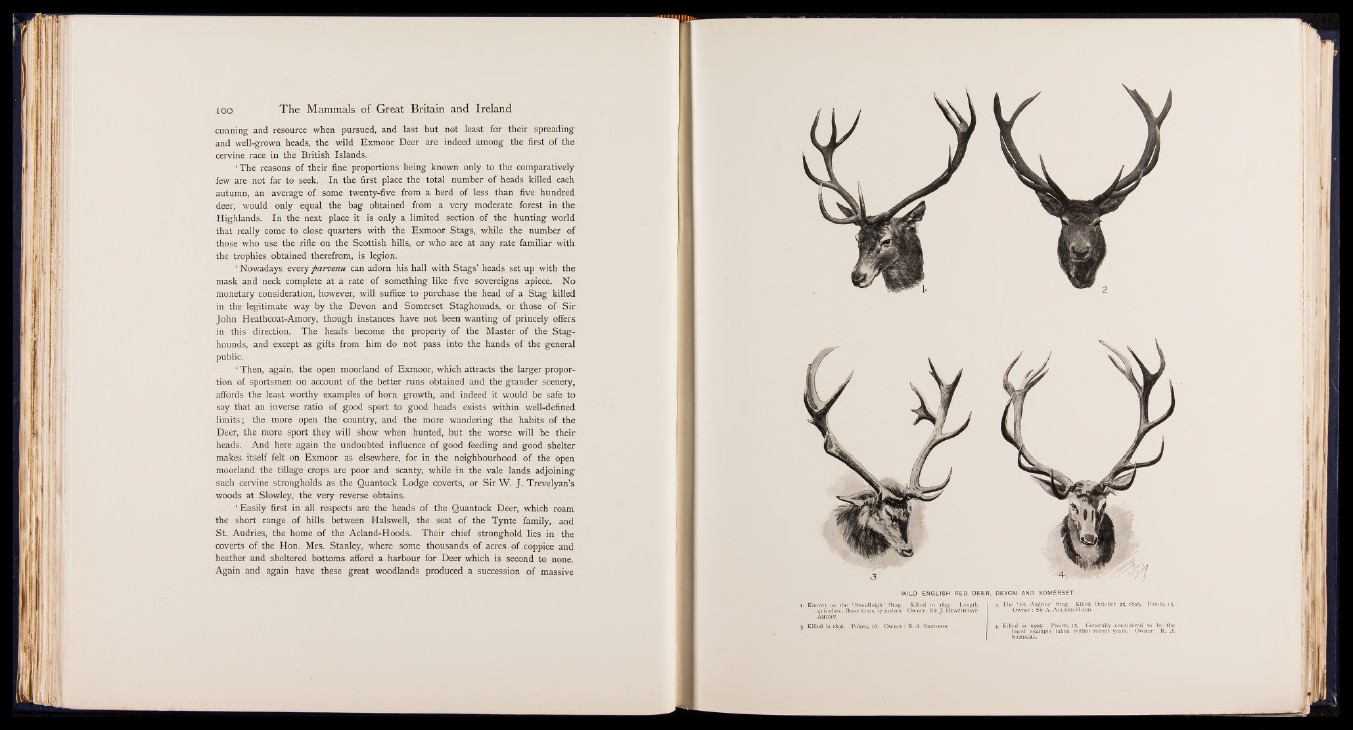
cunning and resource when pursued, and last but not least for their spreading
and well-grown heads, the wild Exmoor Deer are indeed among the first of the
cervine race in the British Islands.
‘ The reasons of their fine proportions being known only to the comparatively
few are not far to seek. In the first place the total number of heads killed each
autumn, an average of some twenty-five from a herd of less than five hundred
deer, would only equal the bag obtained from a very moderate forest in the
Highlands. In the next place it is only a limited section of the hunting world
that really come to close quarters with the Exmoor Stags, while the number of
those who use the rifle on the Scottish hills, or who are at any rate familiar with
the trophies obtained therefrom, is legion.
‘ Nowadays every parvenu can adorn his hall with Stags’ heads set up with the
mask and neck complete at a rate of something like five sovereigns apiece. No
monetary consideration, however, will suffice to purchase the head of a Stag killed
in the legitimate way by the Devon and Somerset Staghounds, or those of Sir
John Heathcoat-Amory, though instances have not been wanting of princely offers
in this direction. The heads become the property of the Master of the Stag-
hounds, and except as gifts from him do not pass into the hands of the general
public.
‘ Then, again, the open moorland of Exmoor, which attracts the larger proportion
of sportsmen on account of the better runs obtained and the grander scenery,
affords the least worthy examples of horn growth, and indeed it would be safe to
say that an inverse ratio of good sport to good heads exists within well-defined
limits; the more open the country, and the more wandering the habits of the
Deer, the more sport they will show when hunted, but the worse will be their
heads. And here again the undoubted influence of good feeding and good shelter
makes itself felt on Exmoor as elsewhere, for in the neighbourhood of the open
moorland the tillage crops are poor and scanty, while in the vale lands adjoining
such cervine strongholds as the Quantock Lodge coverts, or Sir W. J. Trevelyan’s
woods at Slowley, the very reverse obtains.
‘ Easily first in all respects are the heads of the Quantock Deer, which roam
the short range of hills between Halswell, the seat of the Tynte family, and
St. Audries, the home of the Acland-Hoods. Their chief stronghold lies in the
coverts of; the Hon. Mrs. Stanley, where some thousands of acres of coppice and
heather and sheltered bottoms afford a harbour for Deer which is second to none.
Again and again have these great woodlands produced a succession of massive